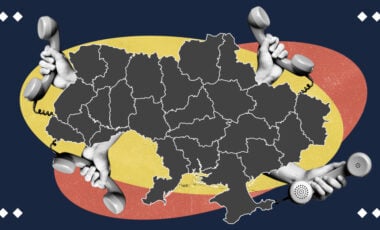Solutions to win: Defense Ministry unveils first underground hospital for Ukrainian military

Photo: Ministry of Defense
The Ministry of Defense, in collaboration with the Medical Forces "East," has successfully established the first underground hospital to provide primary medical care and stabilize injured soldiers. This is part of a larger project involving over twenty underground stabilization points.
The Ministry of Defense of Ukraine reports this.
What is the problem?
Russia's full-scale war has resulted in numerous casualties, particularly among soldiers who are on the front lines. As a result, Ukraine must have as many stabilization points as possible to provide primary medical care to wounded soldiers. Additionally, constructing these points underground can significantly enhance their safety amid the ongoing war.
First and foremost, having numerous stabilization points in the war-torn regions of Ukraine is essential for providing immediate medical care to wounded soldiers. Time is of the essence during hostilities, and every minute counts in saving a life. The more stabilization points there are, the quicker and more efficient the medical response can be.
Moreover, it ensures that no soldier is left without the necessary medical attention they need in a critical situation, ultimately improving their chances of survival.
What is the solution?
This project is an essential step in strengthening the medical support of the Ukrainian military on the front lines.
"Such underground stabilization points are critically important for saving the lives of our soldiers. In intense combat operations, we must provide maximum protection and rapid medical assistance to our heroes. This is the first step in the framework of a large-scale project that will strengthen our medical infrastructure and allow even more effective support of defenders on the front line," the Minister of Defense of Ukraine, Rustem Umerov, stressed.

Photo: Ministry of Defense
The first such stabilization point is located near the front line and is designed to provide medical assistance to Ukrainian defenders in the safest possible conditions.

Photo: Ministry of Defense
The hospital was constructed using six enlarged steel bunkers. Each bunker measures 7.6 meters in length and 2.5 meters in diameter. To ensure its functionality, the facility is equipped with ventilation, water supply, and drainage systems, as well as alternative power sources.

Photo: Ministry of Defense
The stabilization point is equipped with electronic warfare (EW) systems for additional protection. The total investment in the project amounted to over 20 million hryvnias.

Photo: Ministry of Defense
How does it work?
According to Roman Kuzev, the acting commander of the Medical Forces "East," the new underground hospital is the best available stabilization point.
"Here, there is an opportunity to provide medical assistance to more than 100 patients, saving hundreds of lives of Ukrainian soldiers. I hope the number of such objects will grow," he said.

Photo: Ministry of Defense
The underground hospital consists of:
- two complete operating units,
- two intensive care units, a workroom,
- recreation module for medical personnel.

Photo: Ministry of Defense
It has modern medical equipment, including oxygen concentrators, ventilators, cardiac monitors, and defibrillators.
The "East" Medical Forces developed and designed a concept for organizing the underground space and technical components to meet NATO standards for second-echelon field hospitals. This hospital has the capacity to stabilize injured soldiers and perform up to four procedures simultaneously.

Photo: Ministry of Defense
The Ministry of Defense implemented the construction of the first headquarters in cooperation with the Metinvest Group.

Photo: Ministry of Defense
For reference:
Volunteers in the Ukrainian capital presented the first mobile stabilization points, called STABNET, to aid in the rescue of critically wounded individuals on the front line, according to Rubryka.
Rubryka also reported that Dmytro Mamonov, a Sloviansk resident currently living in Zhytomyr, has developed electro-stretchers to transport the wounded.
Moreover, two volunteers, Volodymyr Mussur and Roman Borynets from Broshniv-Osada, are creating a ground drone to evacuate wounded soldiers. The radio-controlled device will reach up to 20 km/h and carry at least 150 kg.





















































